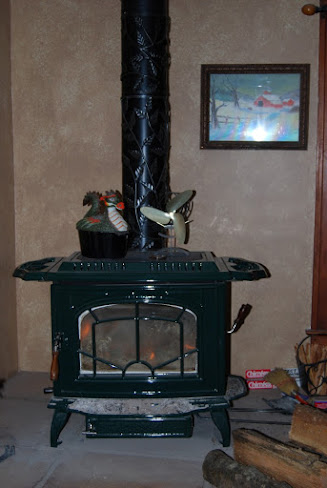As fire investigators we see many house fires each year when homeowners attempt to heat their home with a fireplace that is not designed for such a task. During extremely cold weather or an electrical outage such as those being experienced around the country right now some people are using their fireplace for heating purposes. The problem is that most open gas or wood-burning fireplaces are not designed for extended use, and by operating an appliance for more than a few hours at a time is a recipe for disaster.
Note: There are some exceptions to this - there are some heat circulating fireplaces available that are designed for heating. Some of these types of fireplaces have tubes that vent out the top of the fireplace, or into ducts. And Rumford style fireplaces are also designed for heating.
What most people are unaware of is that with a manufactured fireplace the framing is wood, which can ignite if it is exposed to heat over a long period of time, or if the fireplace is used for large fires. And even masonry chimneys often have wood framing hidden next to the structure or behind the face wall and can ignite and cause a house fire, especially if it is exposed to heat over a long period of time.
Most house fires we see that are related to chimneys and heating appliances are caused by improper construction and lack of proper clearance to combustible framing.
Especially problematic:
- Non-Venting gas logs which burn very hot. These should only be used for four hours at a time and with an open window. Read the manufacturer manual and follow the instructions. Non-venting gas logs should NEVER be installed into a manufactured fireplace.
- Manufactured wood or gas fireplaces are U.L. listed as decorative appliances and should only be used for a few house at a time. Read the operation manual and follow the instructions.
- Wood-burning or gas logs in a standard open masonry fireplace should only be used for a few hours at a time. These are also listed as decorative appliances, and are designed for ambience only. Standard fireplaces actually take more heat from a house than they put into it. A person will feel warm near the fireplace, but the rest of the house cools off.
In order to properly provide heating the following are recommended:
- A freestanding wood or gas-burning stove or a fireplace insert. Together with their flue liners, these types of appliances are designed for heating purposes.
- A circulating type fireplace such as New Aire or Heatilator brands. These are enclosed in masonry and should be installed by a qualified professional.
- A Rumford fireplace built by a qualified Rumford mason. Even though this is an open fireplace, it is designed for heating purposes.
- A Masonry heater built by a qualified masonry heater builder.
Note: in 2021 consumers may take a 26% tax credit on approved appliances, including labor and materials.Ask your hearth dealer or chimney sweep about this incentive program.
Tips:
Have all appliances inspected annually or more often if used for heating purposes by a qualified professional chimney sweep.
Read the instruction manual with any set of gas logs or a manufactured fireplace for safe operation. If none exists, look it up on the internet. Most manuals are posted.
Use the appliance per the manufacturer or builder recommendations and do not burn large fires, install a larger grate, or burn anything other than seasoned cordwood.
__________________________
Marge Padgitt is the co-owner and President of Padgitt Forensic Investigations, and HearthMasters, Inc. in Kansas City, Missouri. She is the author of Wood-Fired Heating and Cooking, and The Chimney and Hearth Pro's Resource Book. Reach her at hearthmastersboss@gmail.com, or 816-461-3365. Her website is www.chimkc.com.


No comments:
Post a Comment
Note: Only a member of this blog may post a comment.